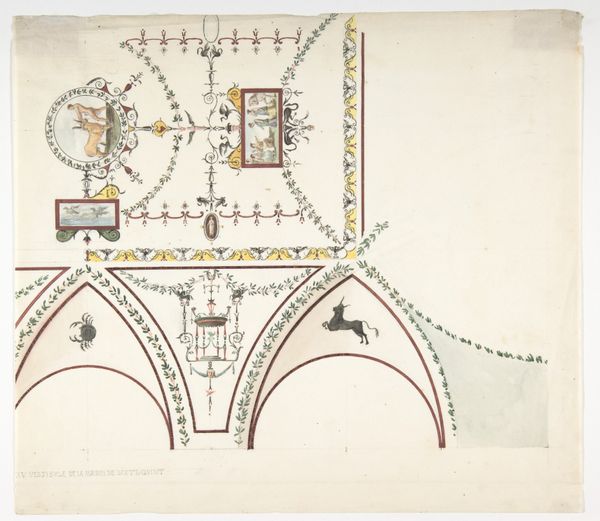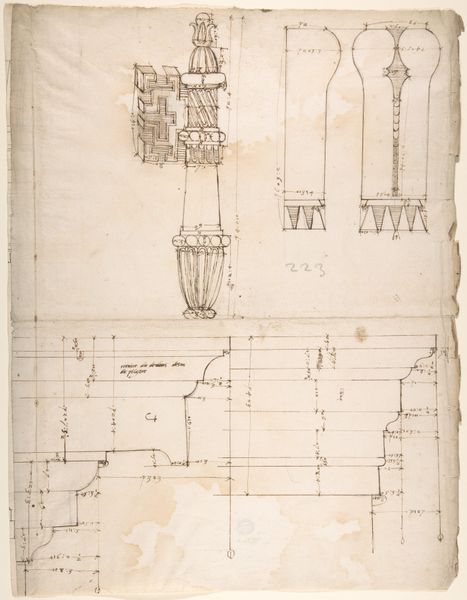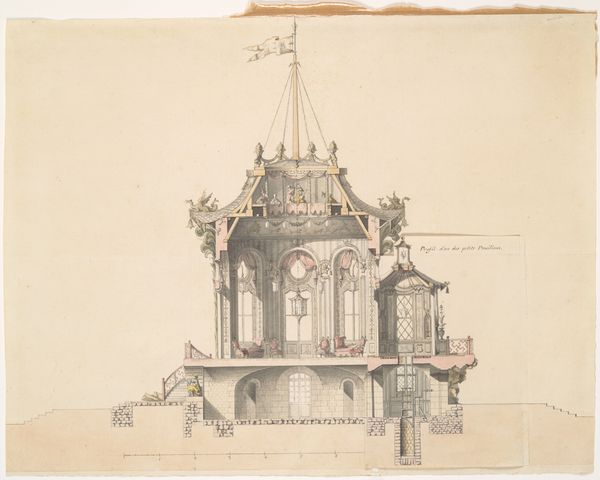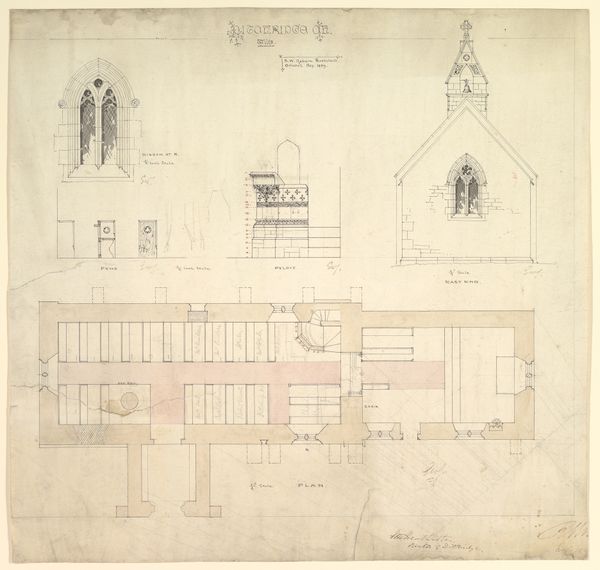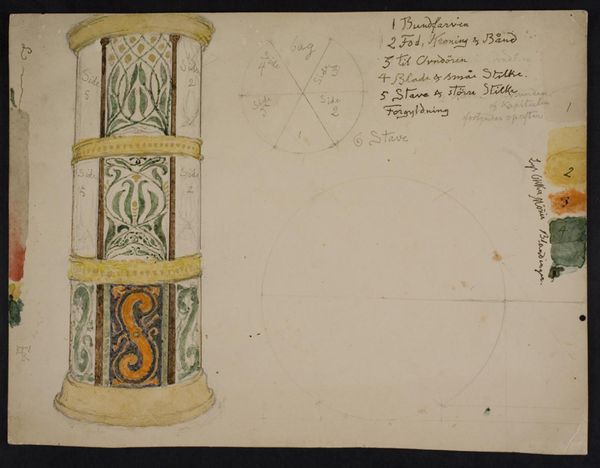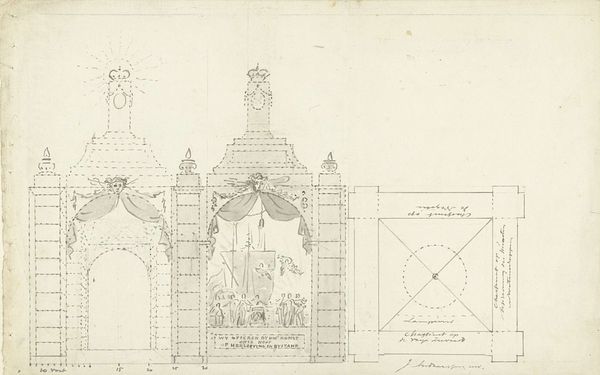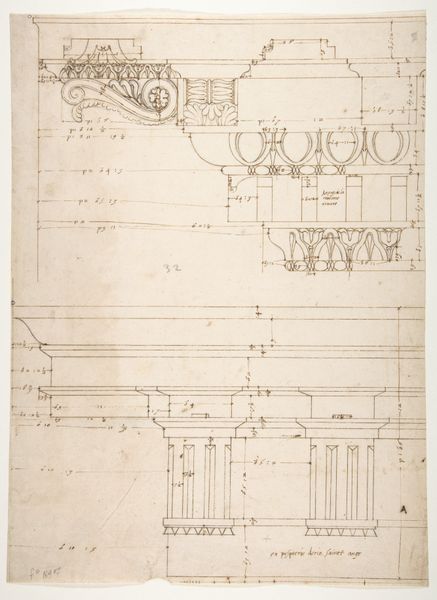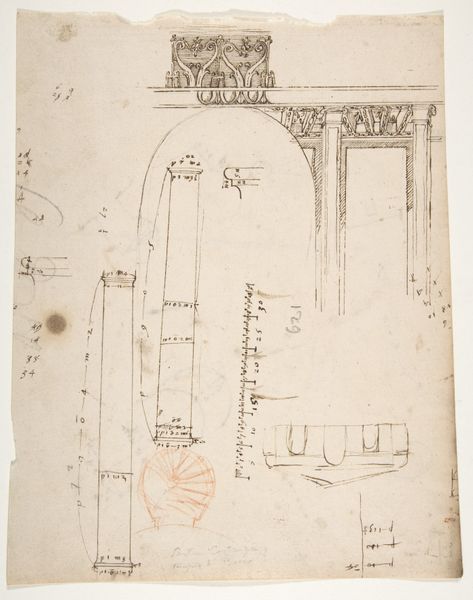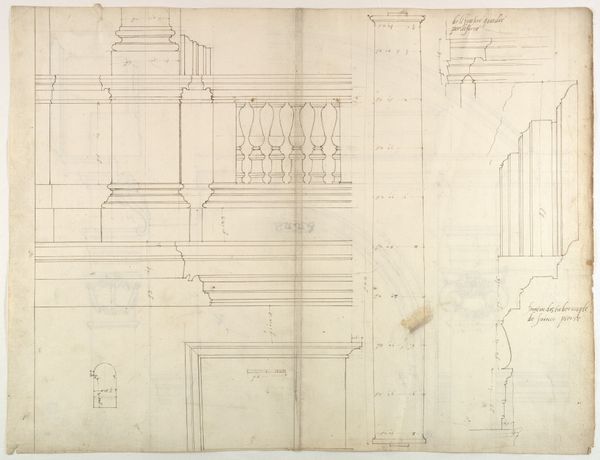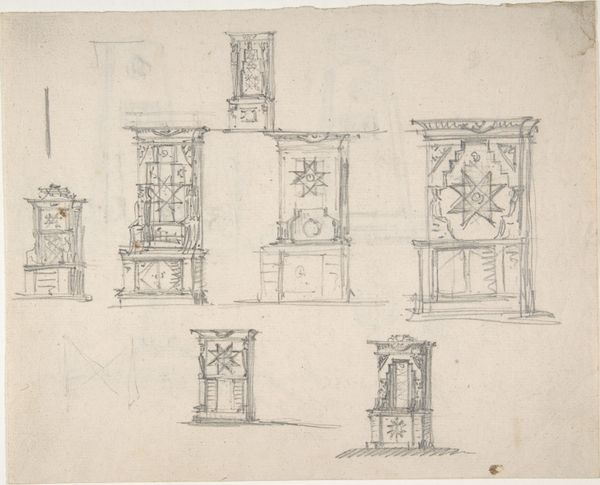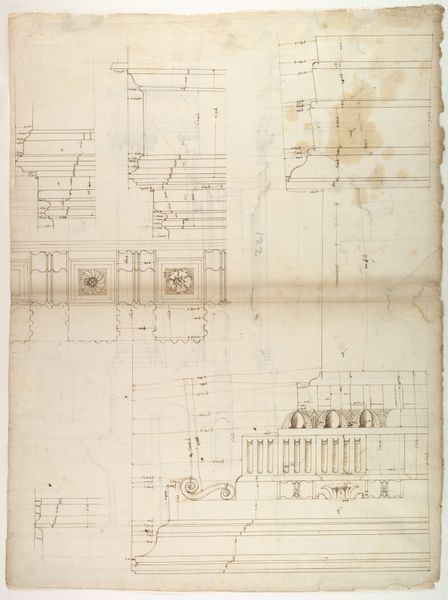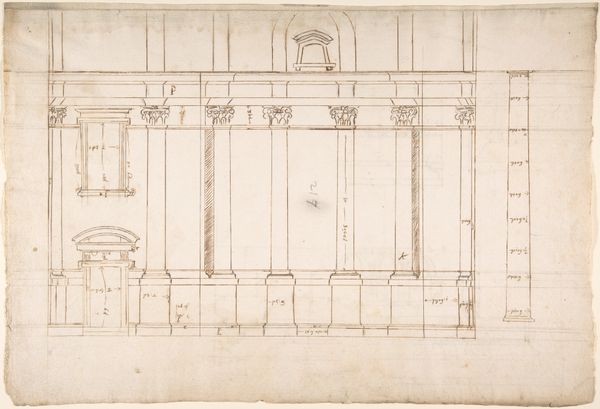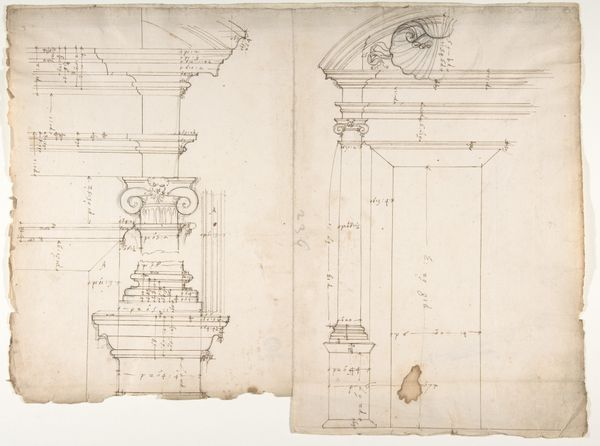
drawing, print, watercolor
#
drawing
# print
#
watercolor
#
decorative-art
#
watercolor
Dimensions: sheet: 9 5/16 x 15 1/2 in. (23.6 x 39.3 cm)
Copyright: Public Domain
Curator: Here we have “Designs for a Church Wall Lantern,” created between 1875 and 1885 by Richardson Ellson & Co. It's a composite of watercolor, print, and drawing, now residing at the Metropolitan Museum of Art. Editor: Well, my initial response is one of contained vibrancy. The colors, while muted by age, promise a playful illumination against what I imagine would be the solemn architecture of a church. The lines suggest detail that asks for closer inspection. Curator: Agreed. The meticulousness points to the value placed on craft. Ellson's firm likely specialized in providing detailed plans so other firms could make it. We have notes scribbled about the specific tint of the poles—hints at the division of labor inherent in these projects. How do raw materials become commodities? It starts with such designs. Editor: Precisely, and those notes highlight the compositional choices: the interplay between cool blues and warm yellows, the careful delineation of light and shadow… Each contributes to the object's formal qualities, beyond mere instruction. Notice how even in draft form, the balance is considered. Curator: Yes, but consider the social context. Ecclesiastical design in the late 19th century was intrinsically linked to religious ideology and power structures. Each ornament tells of what narratives needed reinforcing for parishioners and visitors alike. Editor: Absolutely. Yet, those narratives are conveyed *through* formal means—through repetition, symmetry, even the careful asymmetry that draws the eye. I am wondering about how the lamp's materiality might affect light. Is it made of glass, brass, or something else? Its function surely impacted the construction itself. Curator: Indeed. That's something that would've been carefully noted during production. As a design object meant for manufacture, this embodies economic relations, not just devotional art. What kind of labor force would have been tasked with creating these lanterns? How skilled or unskilled was their craft? Editor: In any event, these very practical concerns clearly feed back into what we're seeing – into how the artwork communicates and how the lantern ultimately served its function in a sacred setting. Curator: A telling glimpse into Victorian manufacture and sacred visual messaging—illuminating indeed! Editor: Yes, it certainly shows that even design plans have an artistic story.
Comments
No comments
Be the first to comment and join the conversation on the ultimate creative platform.
